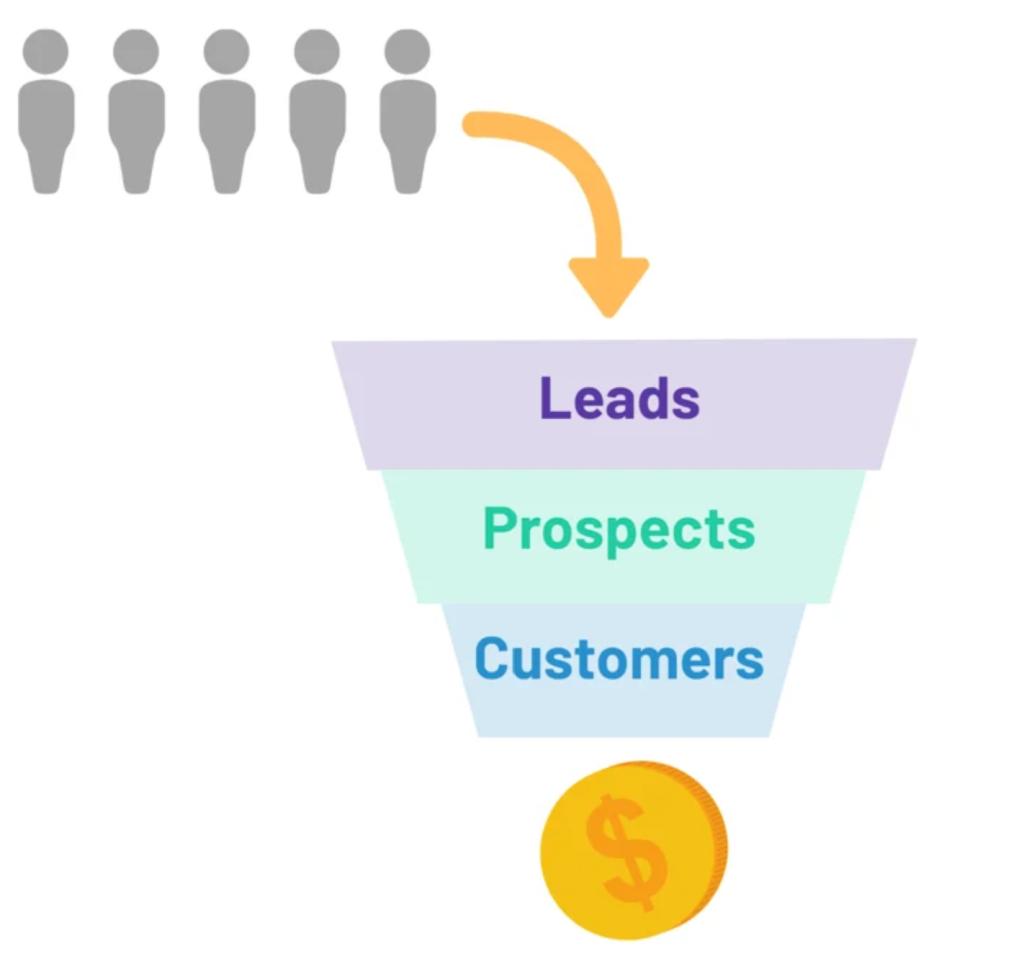- Home
- Fundamentals of Email Marketing
- Prospective Customers in Email ...

✨ Key takeaways:
⭐ Being a direct personal channel, email marketing is ideal for engaging prospective customers.
⭐ A prospective customer is someone between a cold lead and a paying client.
⭐ Data collection, segmentation, and behavioral tracking form the foundation for effective targeting of prospective customers.
⭐ Personalization, tailored campaigns, and relevant offers increase the likelihood of conversion.
⭐ Avoid over-automation, ignoring personalization, and excessive sending to maintain trust and engagement.
Email remains one of the most efficient communication channels out there. And since it provides a more personal connection than any other channel, it works so well for prospective customers: it allows you to speak directly to people who have already taken a small step toward you.
If you’re wondering, “What is a prospective client?” think of them as someone who has shown enough curiosity to subscribe, click, or download something but is still deciding whether to go further. Email gives you the opportunity to connect with these people in a way that is relevant to their particular interests. By tracking open rates, click-through rates, and the type of content they engage with, you can spot the signals that tell you that prospective customers are paying attention. Then, through consistent, relevant email campaigns, you can nurture that interest further until they become your loyal clients.
What Is a Prospective Customer in Email Marketing?
If you imagine a hypothetical scale, with a stranger on one end and a paying customer on the other, a prospective customer would be standing somewhere in the middle of it. And that positioning says a lot about their relationship with your brand: they’ve stopped being strangers by stepping a little closer.
That step they took might have been subscribing to your newsletter, signing up for a free resource, or just lingering on your product page a bit longer. These are all signs of interest and curiosity. Yet, something still holds them back, as they are obviously not ready to take the next step and buy. So, if you had to sum up their state in one word, it would be potential. But for now, they’re in that in-between stage—closer than a stranger, but not yet a customer. And it’s up to you whether they’ll stay there, drift away entirely, or (and this is what we want) move forward and become paying customers.
This is where we come closer to the prospective customer definition of a term and a common mistake that many people make: they use “prospect” and “lead” interchangeably, forgetting they’re not quite the same. A lead might be anyone whose contact information you’ve collected, but they may have done nothing beyond that. A prospective customer, by contrast, has already shown real interest and is the one your email marketing efforts can truly move. Just like in sales prospecting, understanding this difference is very important. Because the way you approach a cold lead is completely different from how you nurture someone who is already halfway toward making a decision. With the right messages, you have all the chances to turn those just-interested and yet-potential customers into actual clients who buy and grow loyalty.

How to Identify Prospective Customers for Email Marketing Campaigns
When it comes to finding a prospective customer, this is one process you should never outsource to luck. It should be structured and controlled, and, as with many other things, it starts with data collection.
If you want to know your prospective customers better, you can do it in two ways. First, you can use forms and surveys, which can tell you who your prospective customers are, what they’re interested in, and what they need. In the end, what’s a better way to find something out about a person than asking them directly? Then, there’s website analytics, which can show you how they move through your website: pages they linger on, how long they stay, which actions they take. Combined together, these sources provide you with a pretty full picture of the prospective customer meaning in the context of your business. So, once again: don’t be afraid to ask direct questions, and always monitor the actions of your customers.
Once you have that information, you can move to segmentation. As there will be plenty of data, you will see that customers have different goals, different ages, different occupations. These data allow you to identify bigger clusters and group your prospects accordingly. This will allow you to see if there are any patterns in your customers’ behavior and create messages that speak directly to the needs of a certain group. By doing so, you are improving the chances of turning these prospective clients into actual customers rather than sending them useless stuff.
Finally, there are behavioral signals. These are tracked through metrics like email open rates, link clicks, and downloads. They show you which people have a clear intent to engage with your brand. They also help you understand, first of all, how engaged your customers are overall—which points, indirectly, to the fact that your content is actually good. Secondly, they help you recognize patterns in engagement that indicate your prospective customers are moving closer to making a decision.
Creating Targeted Email Campaigns for Prospective Customers
After you’ve gone through all the steps we discussed in the previous chapter, you can start creating targeted email campaigns for your prospective customers.
The first thing to think about here is personalization. By now, you have enough data to create messages designed for specific people. When you know their demographics, you can write emails that consider their industry or past behavior. Like this, the chances that your messages will hit the target increase substantially, which is exactly what you want.
Next, there are segmented email lists. Since not all prospective clients are at the same stage in their journey with your brand, you should treat them according to their current position. With segmentation, you’ll see the difference between someone who’s been opening your newsletters for months without buying and someone who just signed up. It is obvious that these groups require different campaigns—maybe deeper educational content for the first and a friendly welcome series for the second. Understanding that is another key towards turning a prospective customer into a client.
Finally, lead magnets and special offers. There are plenty of things you can offer to your prospective customers to nudge them toward action, and that’s not the focus of today’s article. But when deciding between a discount or a free resource, you need to consider segmentation here as well. Your lead magnet should be closely aligned with your customer’s interests. If it is, it can be exactly that final push they need to make a real connection with your brand.
Common Mistakes to Avoid in Email Marketing for Prospective Customers
Even when you are well familiar with the idea of a prospective client and have the tools to identify and nurture them, it’s surprisingly easy to lose their interest if you’re not careful. There are a few common mistakes that can undermine your efforts and push your prospective customers further away instead of bringing them closer.
Overautomating. Automation is a great helper, but (again and again) it’s not a substitute for genuine communication. It should support your process, not take over completely. If you want your messages to be read, make them sound human. It is absolutely possible, even if they’re part of an automated flow.
Ignoring personalization. Ignoring personalization is equal to signing a death sentence for your campaign. It is even less forgivable if you have data on hand. Prospective customers have already shown interest, so don’t waste your chance to make it bigger by sending content that is irrelevant to them.
Oversending. Sending too many emails too often can have the opposite effect of what you want. Instead of building trust, it risks irritating your audience and causing unsubscribes. So, instead of aiming for a certain number, rather try finding a balance between frequency and value—that’s a much better target to aim for.
To Sum Up
In this article, we defined what a prospective customer is—a person who has already taken a small step toward your brand and is deciding whether to take the next one. And it’s up to you to help them make that step toward you. By using email as the most personal communication channel and by doing the important pre-work, such as data collection, segmentation, and understanding behavioral signals, you give yourself every chance to turn your prospective customers into loyal clients.



